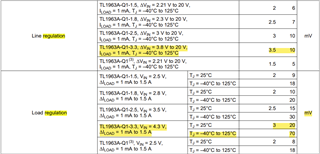Other Parts Discussed in Thread: TPS73801, TL1963A-Q1
Hello TI,
I am using TPS7A26 to generate 5V outptut voltage with 2% tolerance from 8.5V input voltage and the load current required is 100mA. I would like to protect output of this LDO from Lightning strikes in the order of 125V/25A and 250V/10A without compromising the output voltage tolerance. I have a bidirectional TVS diode with 6.5V breakdown voltage but LDO output doesnt support negative voltages. I thought of using TPS255x power-distribution switch to protect the output of LDO but even it doesnt work for negative voltages. Does TI have any power distribution switch/load switch which meets my requirement ? or do you have any alternate soultion ?
Best Regards,
Manoj.



